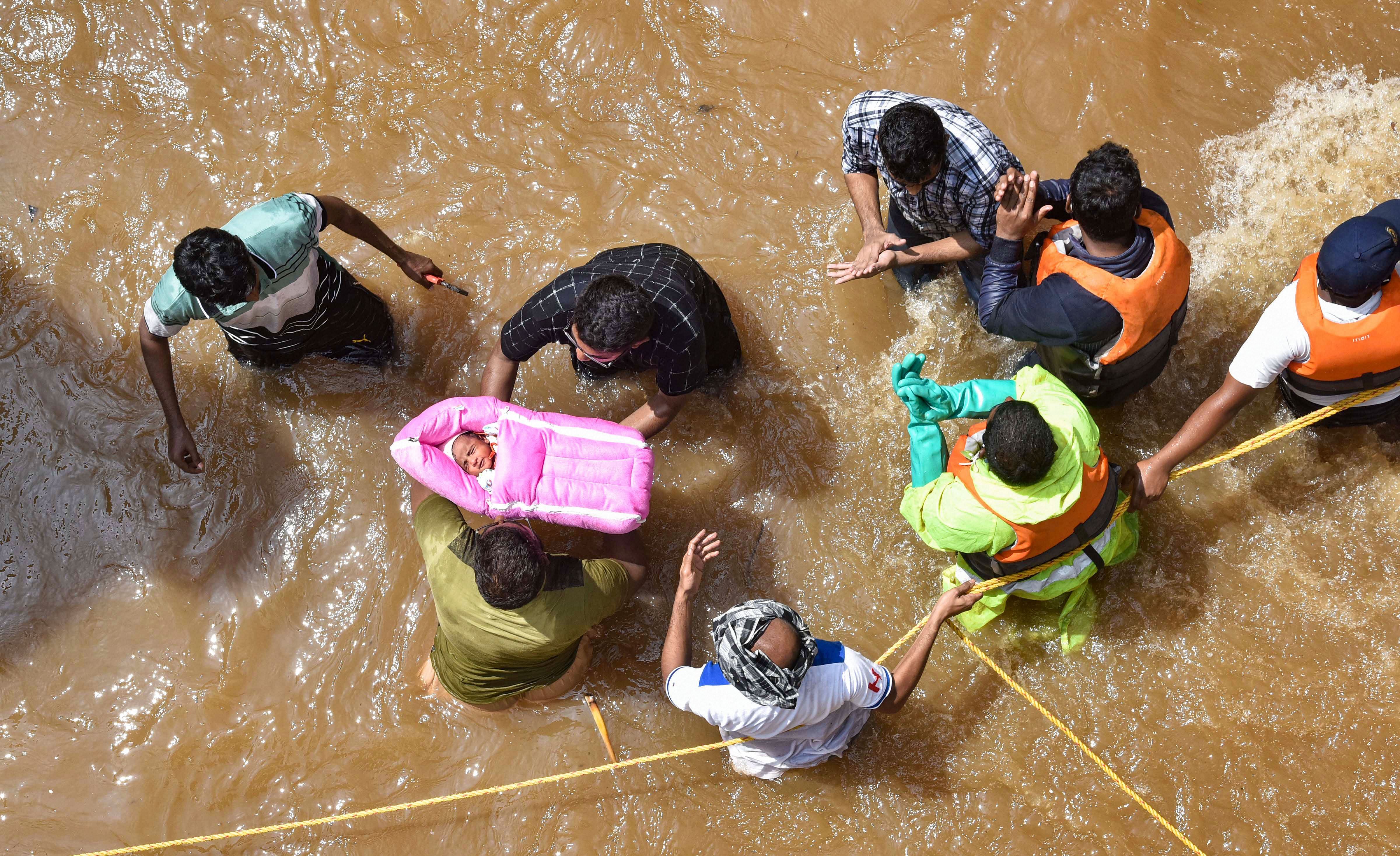
The story of the cloudburst of 1908, when 15,000 people ostensibly lost their lives, has been passed down through the generations in Hyderabad.
The floods in October this year, of a scale unknown in over a century, has left many stunned.
The incessant rains on October 13 caused River Musi to flood, breaching 14 tanks, leaving 33 people dead, and dozens of localities waterlogged for nearly a week.
For two days, the mega city with nearly one crore inhabitants came to a standstill. The floods of 1908 prompted the Nizam to build flood mitigation structures, including the fortification of the Musi banks in the city and two reservoirs upstream to hold the rainwater.
Activists argue that far from modernising such mitigation measures, over the past few decades, successive governments have been indifferent to the rampant encroachment of waterbodies – hundreds of lakes and the Musi river bed itself.
According to the report “Overcoming Barriers to Urban Flood Resilience: A Case of Hyderabad, India,” the total build up area in the city was 17,092 ha in 1964, which increased to 45,550 ha in 1990 and to 86,535 ha by 2015.
Disappearing waterbodies
“Construction activities on the lake and the riverbed have made more people highly vulnerable to floods. Waterbodies in (Hyderabad) reduced from 2.28% to 1.64% between 2001 and 2016,” the study, by Vikas Sehra and Milap Punia of the Centre for the Study of Regional Development, Jawaharlal Nehru University, says.
Also Read | Chennai's story of inundation and water scarcity
Between 2001 and 2015, the city saw an average of 84.61 ha of waterbodies being encroached each year. Government initiatives for riverfront development like Nandanavanam project in 1997 and Save Musi campaign in 2005 were ill-conceived, they add.
After the August 2000 floods, the Kirloskar committee has recommended removal of encroachments, widening of drains from 40 to 60 feet and a nine feet buffer zone around the nalas. The implementation is still pending.
In 2017, municipal administration minister K T Rama Rao reportedly called the expert committee recommendations impractical.
“Is it practically possible to apply such norms in a concrete jungle like Hyderabad?” the minster asked, while replying to a question in the assembly. “Nearly 28,000 structures need to be demolished, paying Rs 12,000 crore as compensation.”
Instead, the Greater Hyderabad Municipal Corporation (GHMC) officials go for demolition of few dilapidated buildings after a severe monsoon, like they were asked to by the minister last month.
“These floods are the direct result of the multidimensional failure of the governments and more so, during the last 6 - 7 years. There is no preparedness, disaster management plans or an authority. With the GHMC not allowed to function properly, and a holistic, sustainable approach lacking, such devastation keeps recurring,” says Prof Purushottam Reddy, a noted environmentalist.